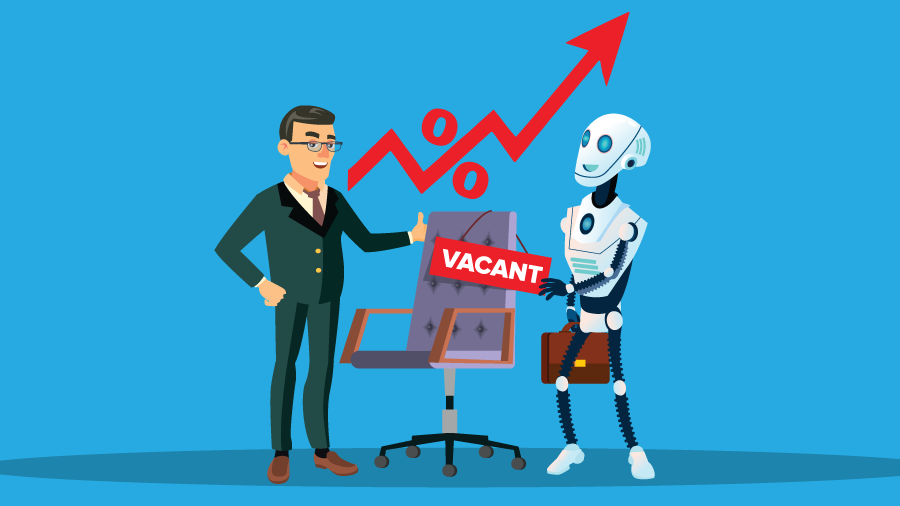by Steve Reinharz, RAD Founder and CEO
Reposted March 22, 2023
Product and worker shortages, soaring inflation, and a tanking stock market have us all on edge. The proposed cure – a hike in interest rates – induces even more anxiety. Since 1961, the Fed has imposed rate hikes nine times to combat inflation. Eight of those instances have led to a recession[1], inflicting widespread pain on consumers and businesses.
The logic for raising interest rates goes as follows: When consumers and businesses can’t borrow, they don’t buy as much. Demand decreases for goods and services. With sales down, companies lay off workers. Unemployment rises. Workers settle for lower pay. The upward spiraling of prices and wages is slowed, stopped, and often reversed, creating a period of economic recession before a healthy recovery begins.
Here’s my question: does this model make sense anymore? If we can no longer rely on a key assumption – that raising interest rates will lead to businesses reducing their workforce – does it make sense to burden every sector of the economy with what may prove to be a pointless and painful exercise?
Speaking about the prospect of a looming recession, the president of the outplacement firm LHH, John Morgan, recently told the New York Times, “Customers are trying to avoid the fire and rehire playbook of the past.” He explains that it’s just too expensive. Employers would prefer to invest in upskilling and reskilling workers, equipping them to succeed in new roles.[2]
Even low-wage, low-skilled workers – considered by management as most dispensable – may find themselves less vulnerable than in past recessions. Business owners who laid off such workers at the beginning of the pandemic are still struggling to restaff. Adecco USA reports that 37% of employers have loosened requirements for job candidates[3], in some cases eliminating background checks, drug screening, multiple interviews, and other screening procedures. Even so, hiring managers can’t find waiters, dishwashers, cooks, cashiers, janitors, security guards, call center operators, bus drivers, health aids, daycare workers, and other hourly employees to bring their operations back up to capacity. Who are they going to let go?
Suppose we could increase productivity and the availability of goods and services rather than reduce the demand for them. Wouldn’t that be a preferable way to rebalance the labor market and ultimately combat inflation? What seemed like pie-in-the-sky thinking not long ago is now a real possibility, thanks to the maturing fields of AI, robotics, and autonomous solutions. With their assistance, I believe we can achieve a new equilibrium without first putting our economy into a tailspin.
The pandemic accelerated the use of robotic workers and the public’s acceptance of them. Without enough candidates to fill the ranks of available service positions, many businesses discovered that automation could perform the roles of those unfilled jobs, doing them better and more affordably. The experience of small business owner Shana Gonzales, a Checkers fast-food franchisee in Atlanta, Georgia, is emblematic of the trend. Unable to staff her restaurants’ drive-through lanes since early in the pandemic, she implemented speech and voice-recognition systems that directly communicate customers’ orders to the kitchen and cashier. She told the New York Times, “We’ll look back and say why didn’t we do this sooner?[4]”
Ms. Gonzales’ turn to automation is being replicated throughout all business sectors, in companies of all sizes. Prior to COVID-19, McKinsey & Company predicted that 37 million US workers would be replaced by automation by 2030. Recently, it increased its projection to 45 million[5]. Many jobs will be lost, but new ones will be created. They will be more interesting and gratifying than those eliminated, making, selling, supporting, or working with the new AI-enhanced technologies.
These solutions will also improve the quality of life. The exploding presence of robots in eldercare environments models the paradigm shift. With a shortage of healthcare aids, robots are picking up the slack. Robots can assist with physical tasks like serving food and basic grooming. They can support emotional needs by providing companionship, playing games, and eliciting social engagement. Robotic pets have proven to be highly successful at reducing agitation in dementia patients without requiring the care and attention that real pets do. Medical robots are not only filling positions and delivering necessary support; they are expected to keep the cost of eldercare in check. Projections indicate the category will grow by 15.7% annually for the duration of this decade[6]. Clearly, robots accomplish many of the same end goals that an interest rate hike would, without any inflicted pain.
Security services is another sector where robots and automation are increasing supply, providing superior results at a lower cost. Pre-pandemic, a dire shortage of security officers had guard companies turning away customers. Since then, the staffing situation has only worsened, while hourly rates have skyrocketed. In response, the guard industry is embracing “autonomous remote services,” leveraging interactive, cross-functional technology powered by intelligent-self-learning software. For example, Midway Car Rental, the largest privately-owned car rental company in Southern California, has recently deployed robotic ROSA (Responsive Observation Security Agent) devices on its car lots and found them to be highly effective at deterring crime. For security guard companies, automation is solving the worker shortage crisis, increasing the availability of their services, and allowing them to market those services for a fraction of the previous price.
It’s time for other sectors to follow suit. Rather than force businesses to lay off workers by reducing demand for their products and services through rate hikes, let’s use technology to fill open jobs, increase supply, reduce operating costs, and keep prices in check. Robots can make pizza, wait tables, stock store shelves, dispense medication, guard properties, and so much more. Let’s understand, accept, and accelerate the use of autonomous solutions. Rate hikes are a lousy idea. Robots are an excellent one!
[1] https://piper2.bluematrix.com/sellside/EmailDocViewer?encrypt=10a3d02e-a460-44aa-bf57-2be5effc5c54&mime=pdf&co=Piper&id=dwessel@brookings.edu&source=mail
[2] https://www.nytimes.com/2022/05/17/business/economy/interest-rates-jobs-layoffs.html?referringSource=articleShare
[3] One in Three Companies Have Loosened Job Requirements to Hire in a Tight Labor Market, Adecco USA Survey Finds (prnewswire.com)
[4] https://www.nytimes.com/2021/07/03/business/economy/automation-workers-robots-pandemic.html
[5] https://www.mckinsey.com/featured-insights/future-of-work/jobs-lost-jobs-gained-what-the-future-of-work-will-mean-for-jobs-skills-and-wages
[6] https://www.globenewswire.com/fr/news-release/2022/02/21/2388542/0/en/Medical-Robots-Market-Annual-Growth-Rate-at-15-7-Industry-Analysis-Report-by-Size-and-Share-Recent-Development-and-outlook-by-2029.html

Steven Reinharz is CEO of Artificial Intelligence Technology Solutions, Inc. (AITX) and founder of the three RAD subsidiaries Robotic Assistance Devices, Inc. (RAD), Robotic Assistance Mobile (RAD-M), and Robotic Assistance Devices Group (RAD-G). Born and raised in Canada but working in the US since 1995, he is an active voice in the security and robotics industries. His experience is multi-faceted in that he started and ran his own security integration company early in his career, then becoming one of California’s premier integrators, Mr. Reinharz was part of a team that successfully sold an integrator to a global security firm for $42 million and has held various other security industry roles. Mr. Reinharz speaks on panels at ISC East and West, ASIS, GSX and others.
Mr. Reinharz credits almost two years of work performed with the LAPD combined with the fundamentals of the book on AI he wrote when he was 19 years old as the basis for many of the technological innovations he has launched. Mr. Reinharz’ professional interests include the application of AI in the 4th Industrial Revolution, the new economy, NFTs and finance.

